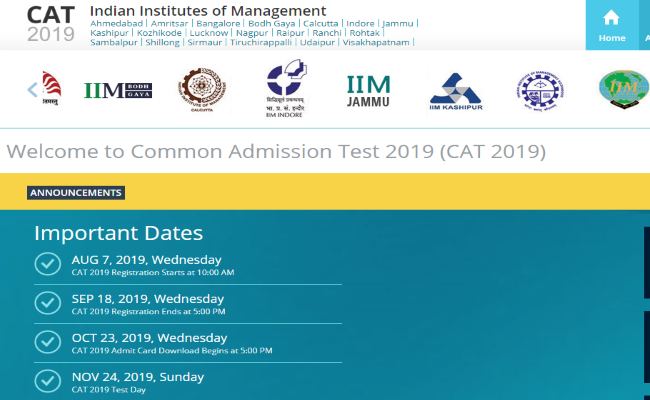
Common Admission Test, or CAT is a screening based on a computer based ability test which tests the students for the topmost institute of management in India that is the Indian Institute of Management or IIMs, which is the cream of management institutes and can be drawn as a parallel to the Indian Institute of Technology or IITs.
The constituents parts of the CAT questionnaire
The screening of Common Admission Test happens on the basis of four major sections, that is, the Logical Reasoning or LR, the Quantitative Ability test, commonly known as QA, the candidate’s reading comprehension or their RC according to the management jargon, their verbal ability or VA and finally, candidates’ skills of Data Interpretation.
This admission test is supervised annually for the selection of worthy students who are sharp and smart enough to crack into one of the top management schools of India for Post Graduation and for diploma courses. Once this tedious screening and selection process is done with, the results are usually published during the first two weeks of January.
After the publication of the results, the IIMs generally release the candidates shortlisted for their Personal Interviews and those who can appear for the Writing Ability Test. This whole process usually starts from February and typically go on till May, varying from one IIM to the other.
However, the greatest advantage of the Common Admission Test is that there is no bar in the number of attempts a candidate can undertake, while there are a lot of examination which allows this sort of freedom, an added benefit of Common Admission Test is also the allowance of a no upper age limit, i.e, there is absolutely no barrier for an age limit for which a candidate can appear for the Common Admission Test exams.
This is done to ensure that an individual who is a business management aspirant is able to appear for the examination at any point in their lifetime, and what appears is the council elected for Common Admission Test believe in the fact that there is no appropriate age for acquiring knowledge, and hence, they keep an open standard.
However, it is to be noted that despite the Common Admission Test examinations having no upper age limit, the most premier institute conducting their admissions on the basis of the said examination has an upper age limit.
Stay connected with fellow students on PaGaLGuY for CAT 2020 Discussion
All you need to know about the eligibility criteria
As per the eligibility criteria of IIM Ahmedabad (which is the numero uno IIM) released in March of 2019, the upper age limit for being an MBA or Master in Business and Administration was twenty seven years.
This is done to ensure a fair and square competition among the candidates appearing for the examination, for someone who is older might definitely have a more refined experience and hence would obviously outsmart the people who are appearing in their amateurish years would lag behind. The council wanted to ensure that we have a fair competition among the aspirants.
It is a common misunderstanding that this should be reducing competition for IIMs, but on the contrary, the CAT Exam has no provision of an upper age limit, only the IIMs do, and since the admission to the IIMs is on the basis of the CAT entrance examinations, the competition stays as it is.
